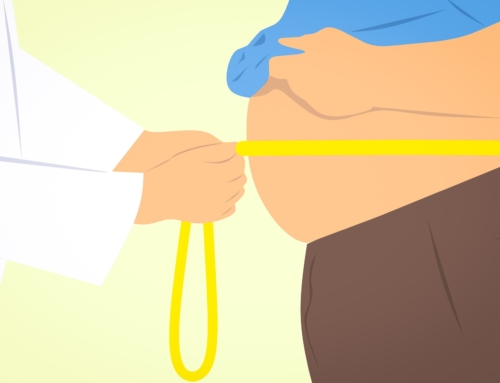Over and over again I see patients who have physical challenges that I am convinced stem from unresolved emotional issues. These issues manifest as disease. A study looking at reasons for primary care visits revealed that almost 90% of the visits were related to underlying stress but are coming out as physical diseases like high blood pressure, diabetes, cancer, insomnia, anxiety, irritable bowel, reflux, ulcers and so many more. While it is easy to identify that stress is a culprit, it can be very difficult to change how stress affects us. I hear all the time …just don’t let it bother you. Don’t be stressed. Now, isn’t that helpful? So, let’s talk about some real tools to help us navigate our stressful worlds….
We can never get rid of stress so we have to shift our thinking from being “stress free” (which doesn’t exist) to how to handle stress differently. We have to change how stress affects us. Instead of stress driving straight thru us it needs to go around us. I love visuals so in this instance I think of one of those car commercials showing how aerodynamic it is with the air going up and over the car. If it went thru it the car would flip over backward. Becoming a sleek car in handling stress is not easy but there are some tools we can use to work toward that goal.
- Meditation: There are so many types of meditation that I don’t want you to get stuck on thinking about sitting in a corner being still and quiet. While sitting quiet and breathing is a beautiful way to meditate I find that when life is really rushing thru you it is hard to keep your mind from bouncing around while trying to meditate. So, if you struggle like I do then open your mind to other forms of meditation. You can have a walking meditation by noticing all the beautiful things outside. How about an eating meditation where you take one bite and just savor that sensation for a minute. My personal favorites are guided meditations with music or someone speaking walking me thru a sequence. Exercise can be meditative. Prayer can be meditative. The key is carving out time each day to just do it.
- Journaling: many people find great release with journaling and if that is you then pull out that journal and get back on track. For me, the thought of writing everything down just brings me to my knees of begging please no, not that! Instead, I have found what I call release journaling to be the perfect fit. I take a piece of notebook paper and write whatever I am struggling with as fast as I can not paying attention to my punctuation or spelling. At the end of being very truthful with myself I tear that sheet out and either burn it or shred it. Released. I love this form because nobody is going to read it and I can just get whatever I am worried about out of my mind. Try it!
- Reframe your stress. When we can’t change the stress the next best way to deal with it is to try to reframe what is going on so we can deal with it better. I often teach an exercise on how to decide which stressors you can let go of, which ones need to be delegated and which ones to reframe. When you reframe you have to change the perception surrounding the issue. For example, when you are taking care of an elderly parent with dementia they can often be taxing with repetitive questions and sometimes angry outbursts. By visualizing them as two year olds, you might be able to reframe their behavior into one that you have more patience for. Think of a two year that constantly asks the same question or throws temper tantrums. As a parent, we handle them by gently guiding them away from that topic or get them to a safe place to calm down. When it is your parent doing the same thing the mean words can be very hurtful. Picture them as a two year old and see if the same words would carry as much weight as they do as an adult. Didn’t say this was going to be easy but this is the type of thing you have to do to change some pretty difficult situations into something you can manage. There are lots of other ways to reframe situations. The first step is to identify what needs to be reframed.
Sometimes reframing is difficult because we just can’t see any other way to perceive that stressor. I have been looking for tools to help with this and have recently found a fascinating approach that involves the frequency of emotion. This is all quantum physics and can get over my head so fast it will snap off so I am going to bring this back down to explain this. There is a program that works on perception reframing. It uses the voice to create visual maps of a persons’ perceptions about specific topics such as relationships, challenges, athletic performance or even health. Let’s take athletic performance as an example. Let’s say you are a tennis player that is struggling to get your serves in especially during a match. On a conscious level, you may practice new techniques and take lessons but if your subconscious is still bound by the perception that you cannot make your serves then your game will still suffer even though you just spent all this money on lessons. The same goes for relationships & health issues, sometimes it is our subconscious that keeps us bound in the same pattern even though we are trying so very hard to change our pattern. Maybe you repeatedly attract destructive behaviors regardless of a desire for a healthier alternative – this can be in relationships, addictions, health matters… you name it. Our subconscious may have already written its path and until we release those patterns it is hard to reframe our perceptions. While you can do some hard core work with counseling, it takes a significant amount of time and a very skilled counselor to open those doors when we often don’t even realize what doors are closed. This is why this program is so exciting. By simply stating an issue, the program takes the energy of your voice and translates it into a perception index which gives you a visual representation of areas where you are stuck. Then it will give you specific tones designed to offset those perceptions vis an electromagnetic frequency thru a hand cradle. It is amazing to see what literally opens up as our patients have gone thru the sequences. Personally, I discovered that the reason I had been procrastinating on fixing a repair in my ceiling from a water leak had nothing to do with the mess it was going to create but a whole litany of emotional pieces that my subconscious had assigned to that whole event. I have been putting this off for 6 months and I am pleased to tell you that within one week of doing my sequence I fixed my ceiling!! Who knew?? What is funny, I just chose what I thought was a straight forward topic as something I was procrastinating about just to do a demo on the machine. I had no idea what it was going to bring up and release!
I am sharing all of this with you because we are test driving this machine in my office for a few weeks. While I am convinced this is such an incredible tool, I need to see what my patients think before purchasing this expensive machine. If you are interested in being a test patient we are doing free sessions in the next two weeks. We are offering one free session for the first ten people who call. You must call and ask for an EVOX session, NOT email to reserve a spot. You must be a patient or an IV lounge member to be one of our test patients.









